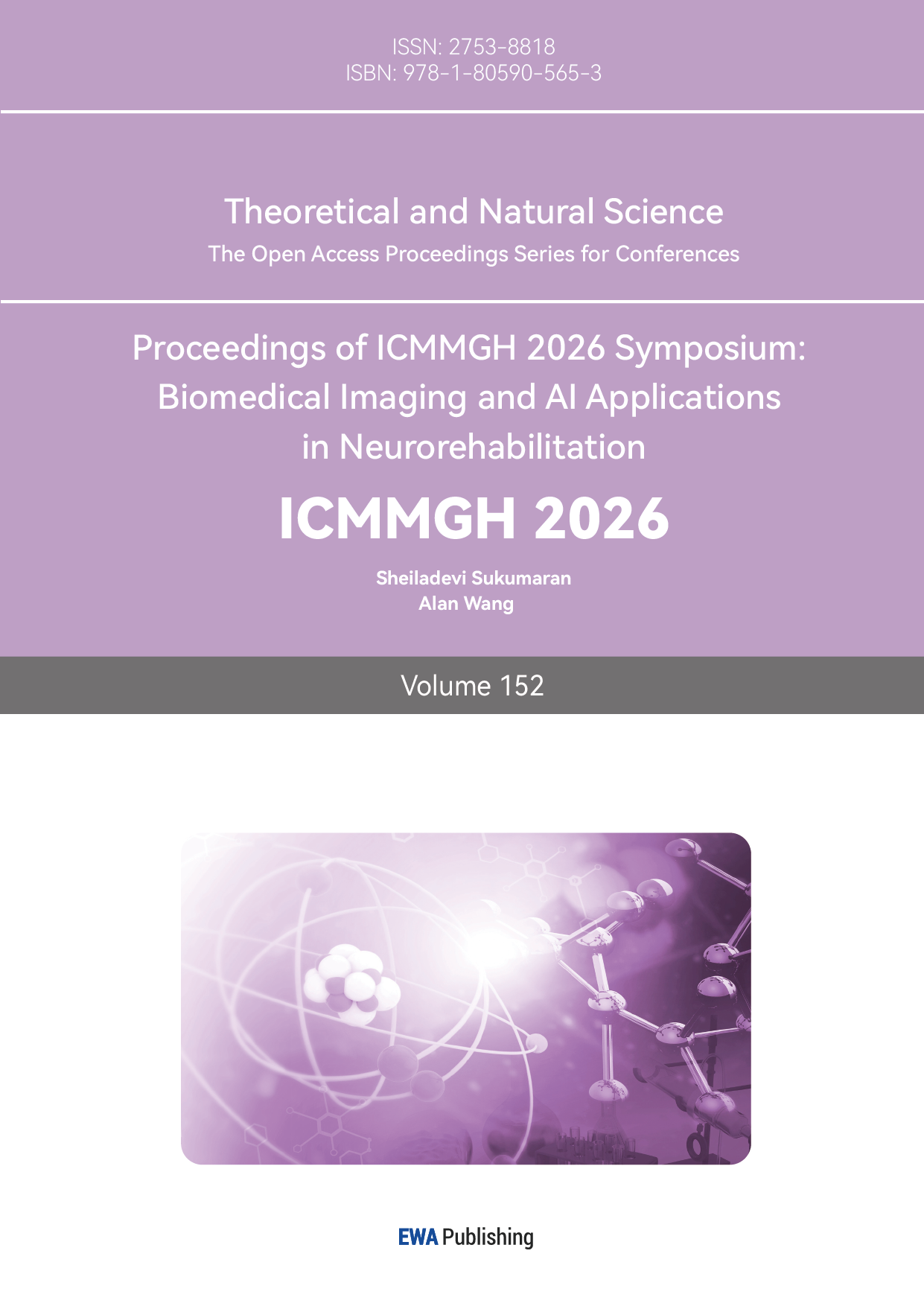References
[1]. Mei, L., Wang, L. N., & Jiang, Q. B. (2022). China's elderly mortality model. Population Journal, 2022, 44 (01): 87-98. DOI: 10.16405/j.cnki.1004-129X.2022.01.007.
[2]. Yang, X. X., Ding, X. B., Mao, D. Q., et al. (2023). Incidence and influencing factors of falls among rural elderly aged 65 and above in Chongqing. Journal of Public Health and Preventive Medicine, 2023, 34 (01): 78-82.
[3]. Schoene D, Heller C, Aung YN, Sieber CC, Kemmler W, Freiberger E. A systematic review on the influence of fear of falling on quality of life in older people: is there a role for falls? Clin Interv Aging. 2019 Apr 24; 14: 701-719. doi: 10.2147/CIA.S197857. PMID: 31190764; PMCID: PMC6514257.
[4]. Zhou, J., Liu, B., & Qin, M. Z. (2021). Research progress on risk assessment and intervention of falls in the elderly Chinese Journal of Geriatrics, 2021, 40(3), 388–392. https: //doi.org/10.3760/cma.j.issn.0254-9026.2021.03.025
[5]. Murphy J, Isaacs B. The post-fall syndrome. A study of 36 elderly patients [ [J]. Gerontology, 1982, 28(4): 265-270.
[6]. Chang VC, Do MT. Risk factors for falls among seniors: implications of gender [J]. Am J Epidemiol, 2015, 181(7): 521-531. DOI: 10.1093/aje/kwu268.
[7]. Gale CR, Cooper C, Sayer AA. Prevalence and risk factors for falls in older men and women: the English longitudinal study of ageing [J]. Age Ageing, 2016, 45(6): 789-794. DOI: 10.1093/ageing/afw129
[8]. Middleton A, Fritz SL, Lusardi M. Walking speed: the functional vital sign. J Aging Phys Act. 2015; 23(2): 314–22.
[9]. Lin Jinlong, Wei Yue, Chen Gong, Lin Shiqi, Pei Lijun. A cohort study on the influence of the chronic diseases on falls among middle-aged and older Chinese. Chinese Journal of Epidemiology, 2022, 43(2): 218-226.
[10]. Stinchcombe A, Kuran N, Powell S. Report summary. Seniors' Falls in Canada: Second Report: key highlights. Chronic Dis Inj Can. 2014 Jul; 34(2-3): 171-4. English, French. PMID: 24991781.
[11]. Peel NM, Kassulke DJ, McClure RJ. Population based study of hospitalised fall related injuries in older people. Inj Prev. 2002; 8(4): 280–283.
[12]. 14 Salvà A, Bolíbar I, Pera G, et al. Incidence and consequences of falls among elderly people living in the community. Med Clin (Barc). 2004; 122(5): 172–176.
[13]. Stevens JA, Sogolow ED. Gender differences for non-fatal unintentional fall related injuries among older adults. Inj Prev. 2005; 11(2): 115–119.
[14]. Schiller JS, Kramarow EA, Dey AN. Fall Injury Episodes Among Noninstitutionalized Older Adults: United States, 2001–2003. Hyattsville, MD: National Center for Health Statistics; 2007. (Advance data from vital and health statistics, no. 392) (DHHS publication no. (PHS) 2007-1250).
[15]. Manlapaz DG, Sole G, Jayakaran P, et al. Risk factors for falls in adults with knee osteoarthritis: a systematic review [J]. PM R, 2019, 11(7): 745-757. DOI: 10.1002/pmrj.12066
[16]. Chen HL, Lu TW, Wang TM, Huang SC. Biomechanical strategies for successful obstacle crossing with the trailing limb in older adults with medial compartment knee osteoarthritis. J Biomech. 2008; 41(4): 753-61. doi: 10.1016/j.jbiomech.2007.11.017. Epub 2008 Jan 4. PMID: 18177877.
[17]. Kornaat PR, Bloem JL, Ceulemans RY et al. Osteoarthritis of the knee: association between clinical features and MR imaging findings. Radiology 2006; 239: 811–7.
[18]. Arden NK, Nevitt MC, Lane NE et al. Osteoarthritis and risk of falls, rates of bone loss, and osteoporotic fractures. Study of Osteoporotic Fractures Research Group. Arthritis Rheum 1999; 42: 1378–85.
[19]. Buehring B, Krueger D, Fidler E, Gangnon R, Heiderscheit B, Binkley N. Reproducibility of jumping mechanography and traditional measures of physical and muscle function in older adults. Osteoporos Int. 2015 Feb; 26(2): 819-25. doi: 10.1007/s00198-014-2983-z. Epub 2014 Dec 9. PMID: 25488806.
[20]. Bergland A, Jarnlo GB, Laake K. Predictors of falls in the elderly by location. Aging Clinical and Experimental Research. 2003; 15(1): 43–50. [PubMed: 12841418]
[21]. Taylor ME, Delbaere K, Mikolaizak AS, Lord SR, Close JCT. Gait parameter risk factors for falls under simple and dual task conditions in cognitively impaired older people. Gait & Posture. 2013; 37(1): 126–130. [PubMed: 22832468]



